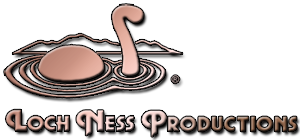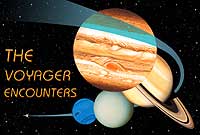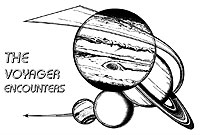The Voyager Encounters
The Voyagers opened a new frontier — the worlds of the outer solar system!
From 1979 to 1989 the Voyager 1 and 2 missions explored the wonders of the outer solar system. The Voyager Encounters is the definitive summary of results returned by the two spacecraft. It recaps the flybys of Jupiter, Saturn, Uranus and Neptune in one convenient, thorough documentary.
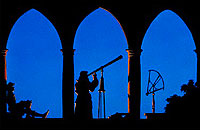 The show begins with an historical look at Galileo Galilei's observations of the planets Jupiter and Saturn, progressing through three centuries of ground-based studies of the outer planets. The show then introduces the two Voyager spacecraft and describes their trajectories and instrument packages.
The show begins with an historical look at Galileo Galilei's observations of the planets Jupiter and Saturn, progressing through three centuries of ground-based studies of the outer planets. The show then introduces the two Voyager spacecraft and describes their trajectories and instrument packages.
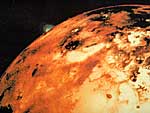 Voyager's cameras provided rare and visually stunning views of the worlds of the outer solar system, plus invaluable information about the chemical makeup of each planet's atmosphere, internal structure, magnetic fields, rings, and moons. Voyager's planetary odysseys began at Jupiter, an impressionistic study in cloudy turbulence, sporting a Great Red Spot and a collection of moons — among them volcanic Io.
Voyager's cameras provided rare and visually stunning views of the worlds of the outer solar system, plus invaluable information about the chemical makeup of each planet's atmosphere, internal structure, magnetic fields, rings, and moons. Voyager's planetary odysseys began at Jupiter, an impressionistic study in cloudy turbulence, sporting a Great Red Spot and a collection of moons — among them volcanic Io.
 Next was Saturn, with its ten thousand glittering rings, cloud-shrouded Titan, and a flock of smaller icy moons. That was followed by bland-looking Uranus, a planet that rolls around the Sun on its side. It boasts a set of dark rings and its own collection of icy worlds.
Next was Saturn, with its ten thousand glittering rings, cloud-shrouded Titan, and a flock of smaller icy moons. That was followed by bland-looking Uranus, a planet that rolls around the Sun on its side. It boasts a set of dark rings and its own collection of icy worlds.
 Voyager's close flyby of Neptune showed storms in its upper atmosphere, and revealed the mottled surface of the unusual moon Triton. The show ends with these hardy space voyagers leaving the solar system — each serving as Earth's ambassador to a far future rendezvous in distant star systems.
Voyager's close flyby of Neptune showed storms in its upper atmosphere, and revealed the mottled surface of the unusual moon Triton. The show ends with these hardy space voyagers leaving the solar system — each serving as Earth's ambassador to a far future rendezvous in distant star systems.
Along with its sister planetary shows MAGELLAN: Report From Venus and MarsQuest, The Voyager Encounters is an excellent way to present the wonders of the solar system to audiences.

Running time: 42:52
Age level: General public
Year of production: 1989
Narrated by Patrick Stewart
Words expertly crafted by Carolyn Collins Petersen
Stereo soundtrack with original music by Geodesium
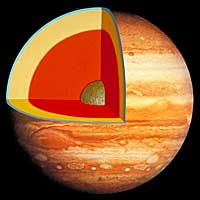 The educational focus of The Voyager Encounters is to present the discoveries made by the Voyager spacecraft at the gas giant planets, their moons, and ring systems. The show uses a set of multi-disciplinary themes in physical sciences, Earth and space sciences, and history of science. These ideas are woven together with images and help relate the information presented in the show to the lives of students, families, and the general public.
The educational focus of The Voyager Encounters is to present the discoveries made by the Voyager spacecraft at the gas giant planets, their moons, and ring systems. The show uses a set of multi-disciplinary themes in physical sciences, Earth and space sciences, and history of science. These ideas are woven together with images and help relate the information presented in the show to the lives of students, families, and the general public.
Show content is relevant in the following subject areas:
Earth and Space Sciences/Physical Sciences:- Orbital motions of the outer planets, moons, rings
- Characteristics of Jupiter, Saturn, Uranus, Neptune
- Properties of planetary atmospheres, moons, rings, magnetic fields
- Processes of change in the outer solar system
History of Science/Science Inquiry/Technology:
- History of telescopic exploration of the outer planets
- Galileo's 17th-century planetary observations
- Modern ground-based observations
- Orbital trajectories and spacecraft instrumentation for planetary exploration
This show has been translated into:
- None yet!
Shows from Loch Ness Productions come with English language soundtracks standard. Translated soundtracks are provided as additional items, not substitutes for the English ones.
Don't see the language you want? Let's work together to create it. Read more here!
